You can download PPDAC for early learners as a PDF or Word document for use in your classroom.
Introduction
Data Education can be delivered to our youngest learners by introducing the ‘Problem Plan Data Analysis Conclusion’ data problem solving cycle (PPDAC) At Early Level. It can provide learners with a simplified understanding of what data is, how we can collect it and what it might tell us.
This resource gives practitioners ideas on how to introduce the PPDAC process to our youngest learners. It provides ideas and suggestions about how typical topics used in early level settings can be used to introduce data oriented questions and data collection to learners.
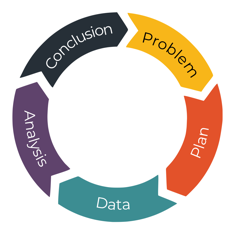
1. Problem.
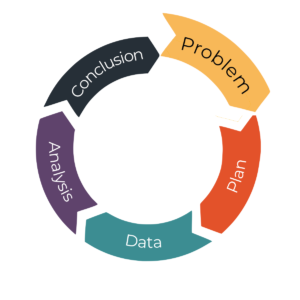
Discover, Ask, Wonder
Use class discussions and current class topics to encourage learners to ask each other questions. What do we want to know about? Great topics for young learners include:
- HWB/People, Place and Environment: Seasons: how much rain falls from the sky?
- HWB/Activity, Diet, Rest and Sleep: How far does a ball travel when it is kicked? Does it go further if I throw it or kick it?
- HWB/Food and Health: The Journey of Food: what happens to plants in the dark? Do plants grow if it doesn’t rain?
- Social Studies/People, Place and Environment: Where do the trains go? How many trains go past our school (if your setting is near a train station. Similar questions possible for buses, planes etc).
2. Plan.
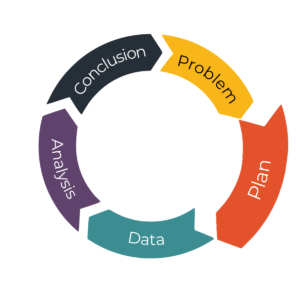
Predict, Find, Design
The planning step aims to encourage learners to think about how they can answer their question. This could include:
- Predicting how many buses (trains) go past the school by developing estimating skills.
- Planning how to find the information they need to check their predictions, for example they go to a bus stop and count the buses or search the internet.
- Using the example of kicking and throwing a ball, learners might predict which one they think will go further.
- They might think about how they could measure the distance travelled. Then they may design an experiment to kick the ball and measure the distance then throw the ball and measure the distance. Measuring could be done with any object and does not require the learners to be at the stage of using metre sticks or similar.
3 Data.
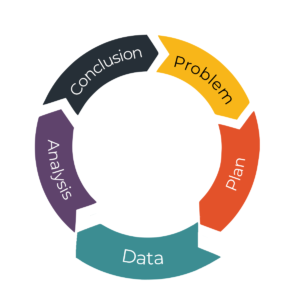
Collect, Organise
The data step is all about collecting the information we need to answer our first question. Using our examples we might:
- Go to the bus stop and count the buses. Different groups of learners could count buses of different colours or split between single decker and double decker. Different groups could count buses at different times of the day.
- Alternatively, we could take a ball to the playground and do an experiment with kicking and throwing.
4. Analysis.
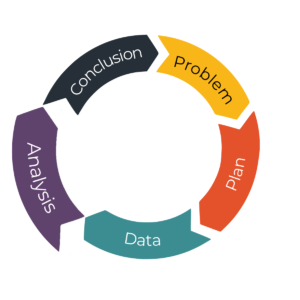
Explore, Visualise
Analysis encourages learners to think about what the data they collected tells them and to find a way to represent that data.
- Draw pictures to show how many single decker and double decker buses were counted.
- Use loose parts to show how many people in the class kicked the ball further and how many threw it further, this could be piles of stones or lolly sticks in the ground.
5. Conclusion.
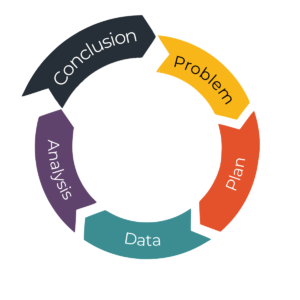
Explain, Communicate
The conclusion step aims to help learners sum up what they have understood, explain it to someone else and sometimes decide on more questions or next steps.
- Use the pictures to summarise what you found. Learners can be encouraged to use ‘more than’ (>) or ‘less than’ (<) when comparing results between groups.
- Decide which method is best for making the ball go further, maybe ask a follow up question about whether they would have the same results if they kicked the ball on grass or on a smoother surface.
© Data Education in Schools, University of Edinburgh, 2024. This resource is licensed CC BY-NC 4.0, unless otherwise indicated.



